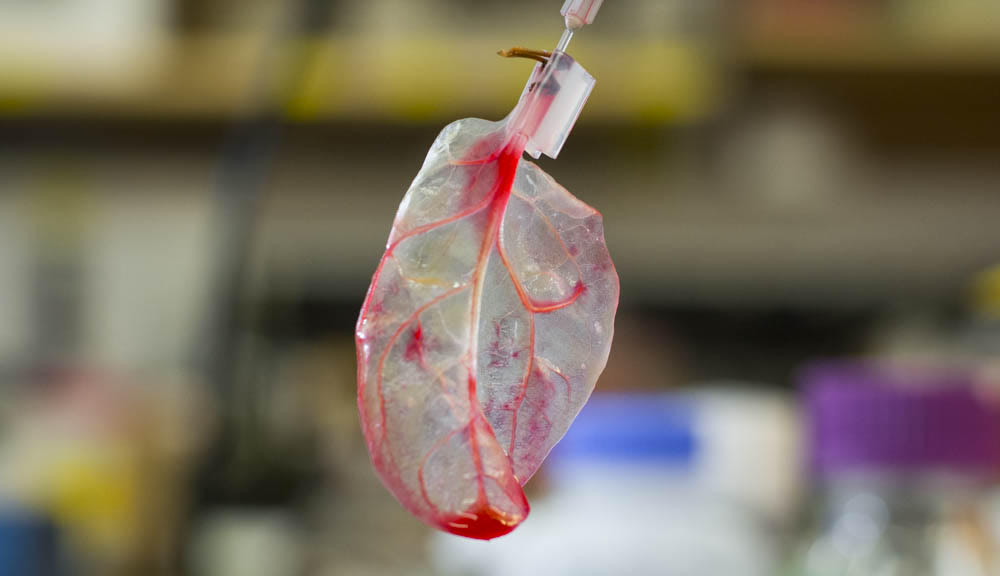Want to become a "plant-org", half plant half human? This might soon be possible thanks to a new engeneering technique. Scientists are developing a new approach in tissues regeneration to replace damaged human heart tissues with decelluralized spinach leaves.
Recently we have heard a lot about 3D printed organs. One big unresolved issue with this method though, has always been the indispensable human vascular network. This because the human blood vessels are very small and delicate and hard to artificially print. To loss of the network means the death of a tissue. Scientists discovered that spinach leaves have similarities in their vascular network structures, through which important nutrients and water are delivered to the cells. When the plant cells are washed away what remains is a framework made primarily of cellulose, a natural substance that is not harmful to people. In a second step this surface gets covered by human cells. In a series of experiments, the team cultured beating human heart cells on spinach leaves that were stripped of plant cells. They flowed fluids and microbeads similar in size to human blood cells through the spinach vasculature, and they seeded the spinach veins with human cells that line blood vessels.
In the near future injured human heart tissues could be recovered with this procedure. Interestingly, also several other types of plants might be suitable for human organ replacement. Wood is one example, scientists mention, its architecture could be helpful to repair human bones.
Source: Sciencedaily. Image: WPI

Share your thoughts and join the technology debate!
Be the first to comment